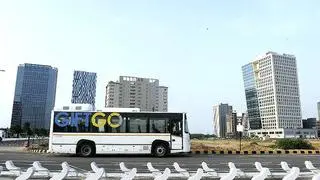In line with various agencies, S&P Global Ratings on Thursday estimated that the Indian economy will register de-growth of 5 per cent during fiscal year 2020-21 (FY21), ending March 31. However, for next three years, it forecasts growth rate between 6.5 to 8.5 per cent.
So far, India has experienced five contraction since fiscal year 1951-52. It was negative 0.4 per cent in FY 1957-58, negative 2.6 per cent in 1965-66, negative 0.1 per cent in FY 1966-67, negative 0.6 per cent in FY 1972-73 and negative 5.2 per cent in 1979-80.
In its research report, SBI said that FY21 GDP (de) growth would be now around negative 6.8 per cent. Ind-Ra’s forecast varies from a growth of 1.9 per cent to a contraction of 2.1 per cent for FY21. CRISIL, in its latest report, expected India’s GDP growth to fall off a cliff, and contract 5 per cent in fiscal 2021.
Three key factors
According to S&P, the big hit to growth will mean a large, permanent economic loss and a deterioration in balance sheets throughout the economy.
The risks around the path of recovery will depend on three key factors. First, the speed with which the Covid-19 outbreak comes under control. The faster flattening of the curve — in other words, reducing the number of new cases — will potentially allow faster normalization of activity.
Second, a labour market recovery will be key to getting the economy running again.
Finally, the ability of all sectors of the economy to restore their balance sheets following the shock will be important. The longer the duration of the shock, the longer recovery.
The agency said that Covid-19 has not yet been contained in India. New cases have been averaging more than 6,000 a day over the past week, as authorities begin easing stringent lockdown restrictions gradually to prevent economic costs from blowing out further. The agency currently assumes that the outbreak peaks by the third quarter.
Policymakers have grouped geographical zones into red, orange, or green categories based on the number of cases. “Areas currently classified as red zones are also economically significant, and the authorities could extend mobility restrictions. We believe economic activity in these places will take longer to normalize. This will have knock-on impacts on countrywide supply chains, which will slow the overall recovery,” the agency said.
Support from the government
It feels that India has limited room to manoeuvre on policy support. The Reserve Bank of India cut policy rates by 40 basis points in May, meaning the repo rate is 115 basis points lower since February. Despite the cuts, India banks have been unwilling to extend credit. Small and midsize enterprises continue to face restricted access to credit markets despite some policy measures aimed at easing financing for the sector.
The government's stimulus package, with a headline amount of 10 per cent of GDP, has about 1.2 per cent of direct stimulus measures, which is low relative to countries with similar economic impacts from the pandemic. The remaining 8.8 per cent of the package includes liquidity support measures and credit guarantees that will not directly support growth.








Comments
Comments have to be in English, and in full sentences. They cannot be abusive or personal. Please abide by our community guidelines for posting your comments.
We have migrated to a new commenting platform. If you are already a registered user of TheHindu Businessline and logged in, you may continue to engage with our articles. If you do not have an account please register and login to post comments. Users can access their older comments by logging into their accounts on Vuukle.